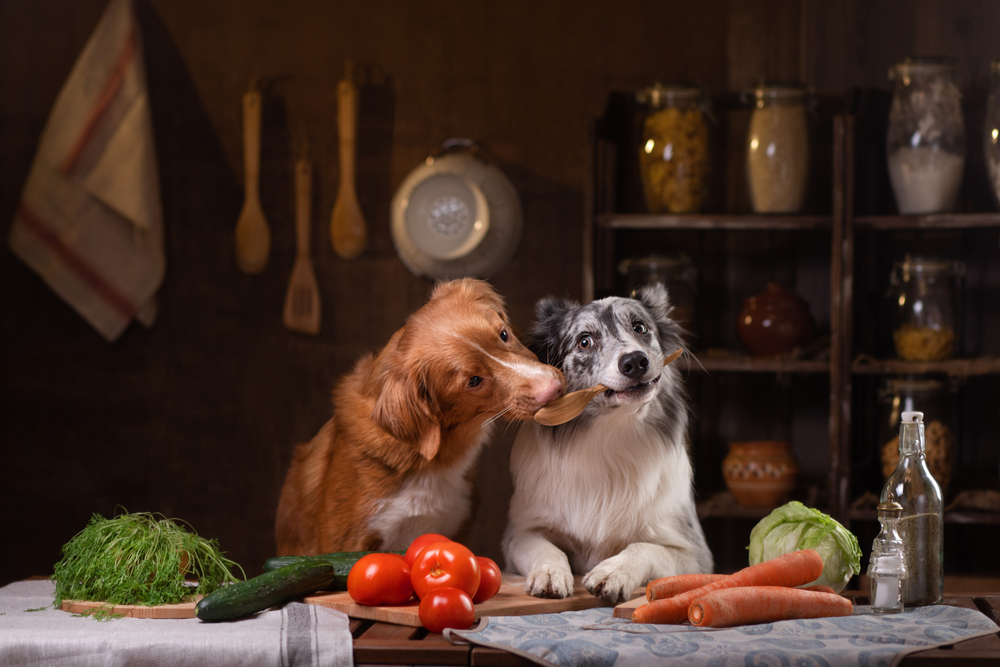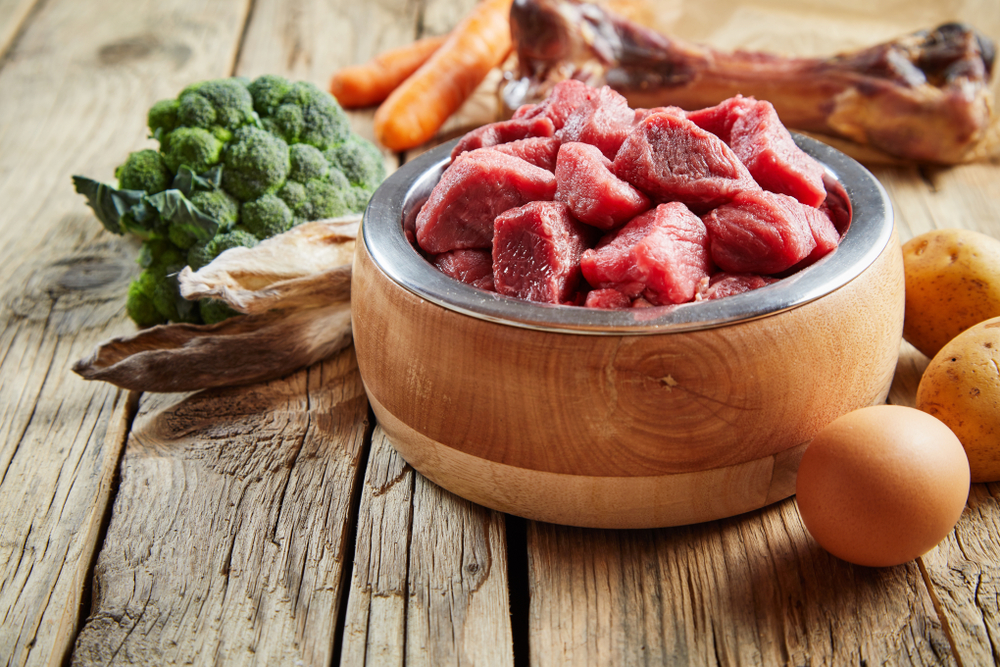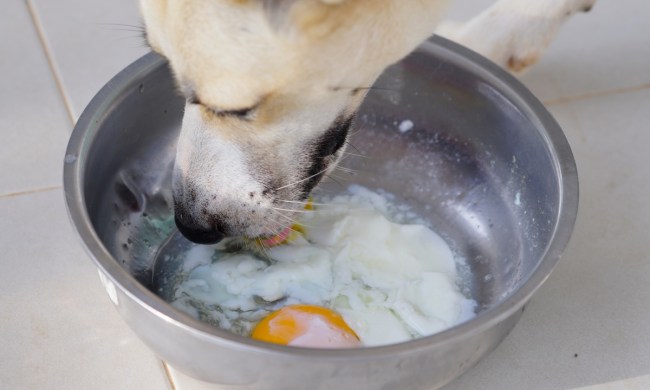Whether you’ve decided to cook for Fido because he turns his nose up at every brand of dog food you bring home or you simply want to spoil your pup by creating fresh meals in your kitchen, you’re in good company. A recent study of more than 3,500 pet owners in Australia, Canada, New Zealand, the U.K., and the U.S. discovered that 66% of dogs were eating homemade meals.
Some pet owners are choosing to control the ingredients in their pet’s meals by cooking for them at home due to a growing distrust of quality standards in the pet food industry. Others have become committed to making healthy food choices for everyone in their household. Whatever the reason, with diligence and careful preparation, making your own dog food can be a healthy alternative — but is it the right decision for your pet? That depends.

Is it cheaper to make your own dog food?
If you have a healthy pet and simply want to feed him meals made with fresh food, your ingredient list may not be as limited as a pet owner’s with a dog who has health issues, such as allergies, which dictate which ingredients are the most beneficial.
Your dog’s size, age, and activity level are also considerations. Larger dogs consume more calories than their smaller counterparts. Puppies need a special formula during their first year, and older dogs, who might be more sedentary, probably shouldn’t consume as many calories as they did when they were younger.
Here’s an example.
George is a relatively healthy 6-year-old Australian shepherd/Great Pyrenees mix who weighs 85 pounds. His owner decided to cook for him after he started having digestive issues with the kibble he’d been eating for the past five years. After his owner consulted with the veterinarian, George’s daily diet now contains between 1,200 and 1,400 calories. His owner uses dog food recipes located on BalanceIT, a website created by veterinarians who are board-certified nutritionists.
One of George’s favorite meals is ground turkey with rice and vegetables. Here is what it costs to feed him this meal for one month:
- Ground turkey – $36
- White rice – $2.00
- Frozen peas – $2.99
- Frozen carrots – $3.00
- Canned cranberry – $3.00
- Sweet potatoes – $3.50
- Canola oil – $1.99
- Total cost: $52.48
By comparison, George’s owner was paying approximately $60 for a bag of his kibble.
At first glance, that looks like a small savings; however, because homemade food doesn’t have the necessary vitamins and minerals canines need, George also receives the recommended dose of BalanceIT Canine, which varies depending on the recipe. One bottle contains 600 grams of powder, costs $67, and lasts approximately one month.
That means that George’s owner is actually paying more than twice as much to make his meals each month than she did when she was feeding him store-bought food. She also estimates spending an additional 45 minutes every other day to cook and prepare his meals.

Is homemade dog food better than commercial?
Even if the cost and time commitment don’t deter you, cooking for your dog is more complicated than setting a place at the table and feeding him whatever your family is eating for dinner.
Dogs have different nutritional needs than their human counterparts, and a recent study indicates that as many as 95% of all homemade dog diets lack crucial nutrients. This can cause cardiomyopathy, osteopenia, irritable bowel syndrome, malnutrition, and various other health conditions. And, although the industry has gotten a bad rap lately, most commercial dog food companies have conducted extensive research to formulate the right mix of nutrients for canines.
Plus, not all human food is fit for canine consumption. Toxic foods for dogs include (but are not limited to) avocados, grapes, raisins, onions, garlic, chocolate, and macadamia nuts.
Premade pet food services
Thankfully, those who want to offer their pets fresh food don’t have to figure it all out by themselves. Several fresh-food services have already done the research:
- Fresh Pet is locally available in most grocery and pet food stores. A 5-pound bag can cost as much as $32.00
- Just Food for Dogs is available at Petco and at various veterinary clinics and hospitals. One 18-ounce meal costs approximately $8.
- Nom Nom is a subscription pet food service. Delivery prices begin at $27 per week.
- The Farmer’s Dog is a subscription pet food service. Plans start at $2 per day and include free shipping.
It all begins with a conversation
If you’re considering switching from kibble to homemade meals, consult your veterinarian. She can advise your best course of action based on your dog’s health, age, and weight. And although cooking for your dog isn’t necessarily cheaper or easier, it definitely has its rewards. If you measure wealth in tail wags and nose nuzzles, the love and appreciation you’ll receive for your efforts are priceless.
If you’d like to learn more about your dog, check out our guide to find out what you need to do if your dog has smelly ears.


